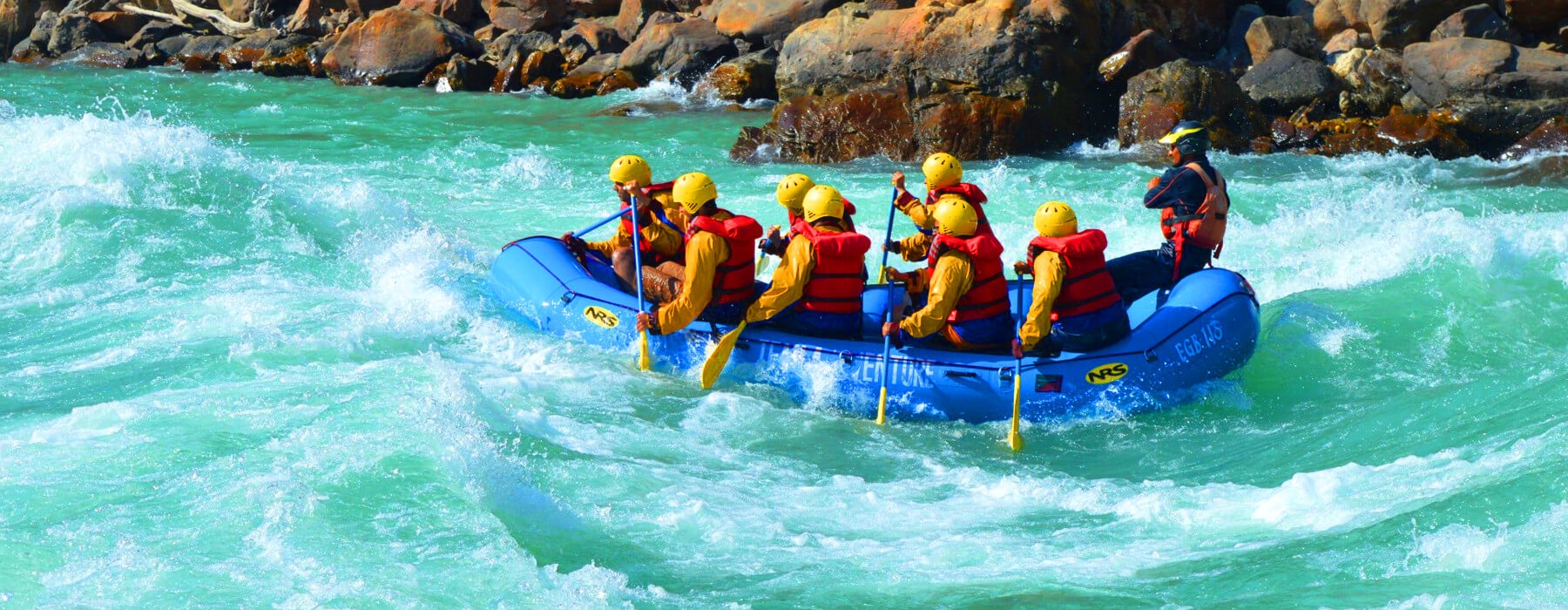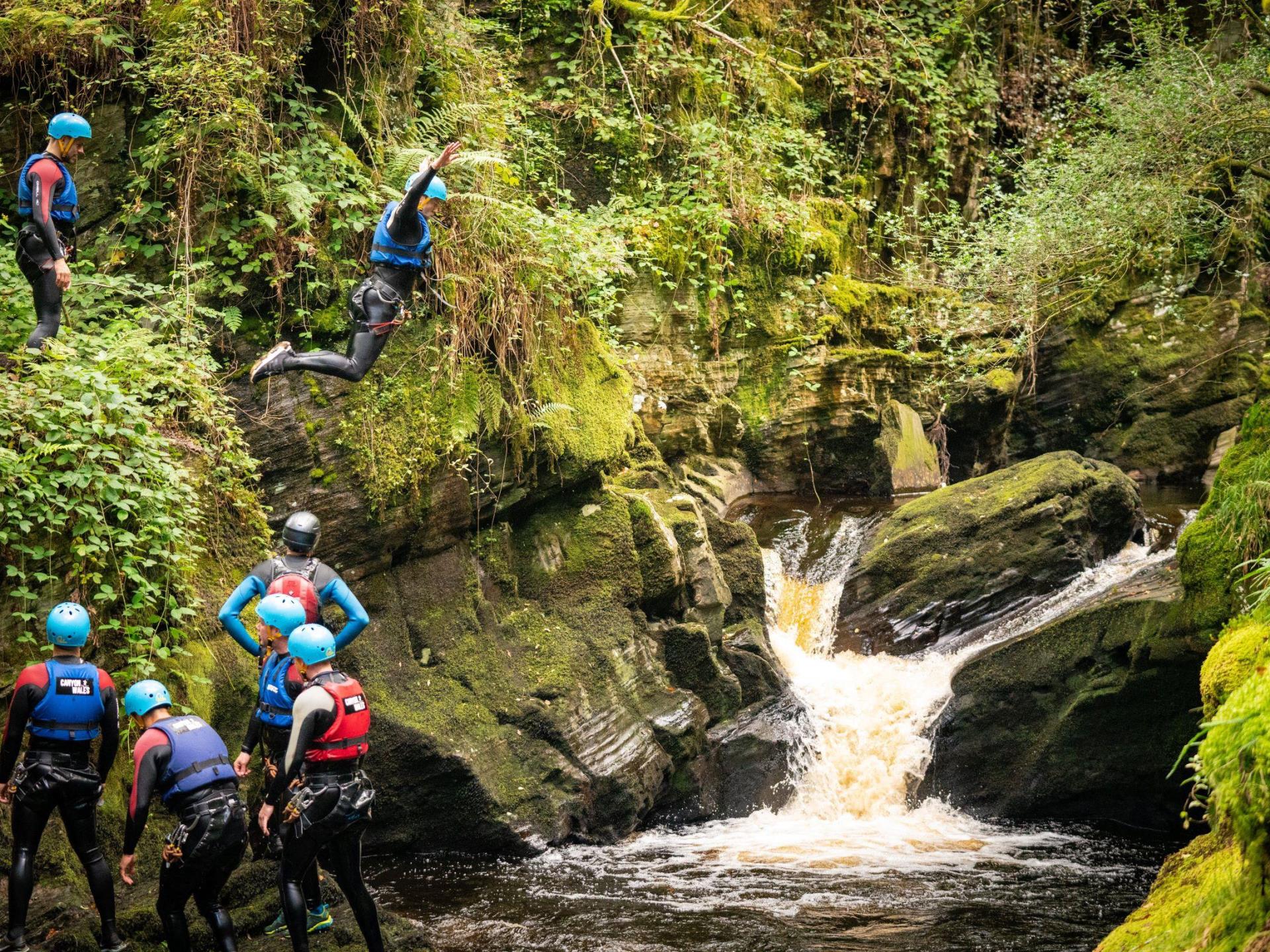Adventure tours beckon travelers seeking extraordinary experiences that transcend the ordinary. Embark on an epic adventure that promises to ignite your senses, push your limits, and create memories that will last a lifetime.
From traversing rugged terrains to exploring hidden gems, adventure tours cater to a diverse audience driven by a thirst for exploration and a desire to connect with the world in a meaningful way.
Definition of Adventure Tours
Adventure tours are meticulously planned excursions that immerse participants in thrilling and challenging outdoor activities. These tours are characterized by their emphasis on exploration, discovery, and physical exertion, setting them apart from conventional sightseeing tours.
Adventure tours offer a unique blend of adventure and education, allowing participants to experience nature’s wonders while pushing their physical and mental limits. They provide opportunities for personal growth, fostering a sense of accomplishment and creating lasting memories.
Target Audience for Adventure Tours

Adventure tours attract a diverse range of individuals, each with their own unique motivations and desires. Understanding the typical demographics and psychographics of adventure tourists is essential for tour operators to effectively market and cater to their target audience.
Generally, adventure tourists tend to be physically active, with a thirst for exploration and a desire to step outside of their comfort zones. They often possess a strong sense of independence and a willingness to embrace new challenges.
Demographics
Adventure tourists come from all walks of life, but certain demographic characteristics are more prevalent among this group. They are typically:
- Aged between 25 and 55 years old
- Well-educated and have a higher-than-average income
- Married or in a long-term relationship
- Employed full-time
- Reside in urban areas
Psychographics
Beyond demographics, the psychographics of adventure tourists are equally important. These individuals tend to be:
- Highly motivated by a desire for personal growth and self-discovery
- Enthusiastic about experiencing new cultures and environments
- Open-minded and willing to take risks
- Physically fit and enjoy outdoor activities
- Value authenticity and sustainability
Types of Adventure Tours
Adventure tours offer a diverse range of experiences tailored to various interests and preferences. These tours can be categorized based on activities, destinations, or themes.
The following list presents some of the common types of adventure tours:
Activity-Based Tours
- Hiking and Trekking Tours:Explore scenic trails, ranging from leisurely walks to challenging treks in mountainous or wilderness areas. Example: Mount Kilimanjaro Trek.
- Wildlife Safaris:Embark on guided tours to observe wildlife in their natural habitats. Example: Serengeti National Park Safari.
- Water Sports Tours:Engage in activities such as kayaking, scuba diving, or white-water rafting in scenic waterways. Example: Grand Canyon Whitewater Rafting.
- Cycling Tours:Explore destinations on two wheels, ranging from leisurely bike rides to challenging mountain biking trails. Example: Tour de Mont Blanc.
- Skiing and Snowboarding Tours:Hit the slopes and enjoy the thrill of skiing or snowboarding in snowy landscapes. Example: Aspen Snowmass Ski Resort.
Destination-Based Tours
- Polar Expeditions:Explore the Arctic or Antarctic regions, encountering unique wildlife and breathtaking landscapes. Example: Arctic Expedition to Svalbard.
- Jungle Adventures:Immerse yourself in lush rainforests, discovering diverse flora and fauna. Example: Amazon Rainforest Tour.
- Desert Expeditions:Embark on adventures through arid landscapes, exploring sand dunes and ancient ruins. Example: Sahara Desert Trek.
- Island Hopping Tours:Discover multiple islands in a single trip, enjoying beaches, marine life, and cultural experiences. Example: Greek Islands Hopping Tour.
- Historical Tours:Visit historical sites and learn about the past, exploring ancient ruins, battlefields, and cultural landmarks. Example: World War II Battlefields Tour.
Theme-Based Tours
- Cultural Immersion Tours:Engage with local communities, learn about their traditions, and experience their way of life. Example: Homestay in a Remote Village.
- Volunteer Tours:Combine adventure with meaningful experiences by volunteering in local communities or conservation projects. Example: Wildlife Conservation Volunteering in Africa.
- Wellness Retreats:Focus on personal growth, rejuvenation, and well-being through activities like yoga, meditation, and spa treatments. Example: Himalayan Yoga and Meditation Retreat.
- Culinary Tours:Explore local cuisine and learn about culinary traditions, visiting markets, cooking classes, and restaurants. Example: Street Food Tour in Bangkok.
- Photography Tours:Capture stunning images while learning photography techniques and exploring scenic locations. Example: Wildlife Photography Tour in Kenya.
Benefits of Adventure Tours
Adventure tours offer a plethora of physical, mental, and emotional benefits that can profoundly enhance one’s overall well-being. From improving physical fitness to boosting confidence and fostering a deep connection with nature, these tours provide a unique and transformative experience.
Physically, adventure tours engage the body in various ways, promoting cardiovascular health, muscle strength, and endurance. Trekking through rugged terrains, kayaking through tranquil waters, or rock climbing sheer cliffs challenges participants to push their limits, leading to increased fitness levels and a sense of accomplishment.
Mental and Emotional Benefits
Beyond the physical benefits, adventure tours also have a profound impact on the mind and emotions. The challenges encountered during these tours foster resilience, problem-solving skills, and adaptability. Overcoming obstacles, whether it’s navigating unfamiliar trails or facing fears, instills a sense of confidence and self-belief.
Moreover, adventure tours provide a much-needed escape from the stresses of daily life. Immersed in the tranquility of nature, participants can reconnect with themselves, reduce stress levels, and gain a renewed sense of purpose and perspective.
The shared experiences and camaraderie formed during adventure tours create lasting bonds and foster a sense of community. Whether it’s sharing laughter around a campfire or supporting each other through challenging moments, these tours provide opportunities for meaningful connections and a sense of belonging.
Planning an Adventure Tour

Planning an adventure tour requires careful consideration and preparation to ensure a successful and enjoyable experience. The key steps involved include destination selection, itinerary design, and logistics.
Destination Selection
Choosing the right destination is crucial. Consider factors such as your interests, fitness level, and budget. Research different destinations, read reviews, and consult with tour operators to find the perfect match.
Itinerary Design, Adventure tours
Once the destination is selected, design an itinerary that aligns with your interests and abilities. Determine the duration of the tour, activities to include, and transportation arrangements. Allow for flexibility to accommodate unexpected circumstances or changes in plans.
Logistics
Logistics involve planning for accommodation, meals, equipment, and safety. Book accommodations in advance, especially during peak season. Arrange for meals that cater to your dietary needs. Ensure you have the necessary equipment, such as clothing, footwear, and safety gear. Develop a safety plan that includes emergency contacts and evacuation procedures.
Safety Considerations for Adventure Tours
Embarking on an adventure tour promises an exhilarating experience, but it’s crucial to prioritize safety to ensure a fulfilling and memorable journey. Understanding potential risks and implementing comprehensive safety measures are paramount for a successful adventure.
Potential risks and hazards associated with adventure tours vary depending on the activity and destination. These may include:
- Physical hazards: Uneven terrain, wildlife encounters, extreme weather conditions
- Equipment failures: Malfunctioning gear, improper use
- Human error: Inexperience, poor judgment
To mitigate these risks, tour operators must establish and enforce strict safety protocols, including:
Pre-Tour Preparations
- Thorough risk assessments to identify and address potential hazards
- Mandatory safety briefings for participants, covering potential risks, emergency procedures, and proper equipment use
- Provision of high-quality, well-maintained equipment
During the Tour
- Supervision by experienced and certified guides
- Adherence to established safety guidelines and emergency protocols
- Regular safety checks of equipment and participants
- Communication systems for reporting incidents and coordinating assistance
Emergency Preparedness
- First-aid kits and trained personnel
- Evacuation plans and designated meeting points
- Emergency communication devices (e.g., satellite phones, radios)
By adhering to these safety measures, adventure tour operators can minimize risks, enhance participant confidence, and create a safe and enjoyable experience for all.
Environmental Impact of Adventure Tours
Adventure tours can have both positive and negative impacts on the environment. On the positive side, adventure tours can raise awareness of environmental issues and promote conservation efforts. They can also provide economic incentives for local communities to protect natural areas.
On the negative side, adventure tours can damage fragile ecosystems, pollute the environment, and disturb wildlife.
Best Practices and Sustainable Tourism Initiatives
There are a number of best practices and sustainable tourism initiatives that can help to mitigate the environmental impact of adventure tours. These include:
- Using sustainable transportation methods, such as walking, biking, or kayaking.
- Staying on designated trails and avoiding off-road driving.
- Packing out all trash and recycling whenever possible.
- Respecting wildlife and avoiding disturbing their habitats.
- Educating tourists about the importance of environmental conservation.
By following these best practices, adventure tour operators can help to minimize their environmental impact and promote sustainable tourism.
Marketing and Promotion of Adventure Tours

Adventure tours offer unique and thrilling experiences, but effectively promoting them is crucial for attracting potential participants. This section explores effective marketing strategies to reach the target audience and generate interest in adventure tours.
Understanding the target audience is essential. Adventure enthusiasts typically seek challenges, outdoor experiences, and opportunities for personal growth. They are often active, adventurous, and have a thirst for exploration.
Marketing Strategies
- Online Marketing:Create a compelling website and use search engine optimization () to improve visibility. Leverage social media platforms to connect with potential participants and showcase tour highlights.
- Content Marketing:Develop engaging content such as blog posts, videos, and infographics that provide valuable information about destinations, activities, and the benefits of adventure tours.
- Partnerships:Collaborate with travel agencies, adventure clubs, and outdoor organizations to reach a wider audience.
- Influencer Marketing:Engage with influencers in the adventure travel space to promote tours and build credibility.
- Email Marketing:Use email campaigns to nurture leads, provide updates, and offer exclusive deals.
Final Review
As you plan your adventure, remember that safety should always be a priority. Embrace sustainable practices to minimize environmental impact and ensure that future generations can also experience the wonders of our planet.
Join the ranks of intrepid adventurers and embark on a journey that will transform your perspective, challenge your limits, and leave you with a profound appreciation for the beauty and diversity of the world.
FAQ Section
What sets adventure tours apart from other types of tours?
Adventure tours prioritize activities that challenge participants physically, mentally, and emotionally, offering unique and immersive experiences that focus on exploration and discovery.
Who are the typical participants in adventure tours?
Adventure tours attract individuals with a thirst for adventure, a love of the outdoors, and a desire to step outside of their comfort zones. They come from diverse backgrounds and age groups, united by a shared passion for exploration.
What are some of the most popular types of adventure tours?
Adventure tours encompass a wide range of activities, including trekking, mountaineering, wildlife safaris, kayaking, and cultural immersion experiences. They can be tailored to specific interests, destinations, and fitness levels.
What are the key benefits of participating in adventure tours?
Adventure tours offer numerous benefits, including improved physical fitness, enhanced mental well-being, increased self-confidence, and a deeper appreciation for different cultures and environments.
How can I plan a successful adventure tour?
Planning an adventure tour involves careful research, selecting a reputable tour operator, choosing a destination that aligns with your interests and abilities, and ensuring you have the necessary gear and fitness level.